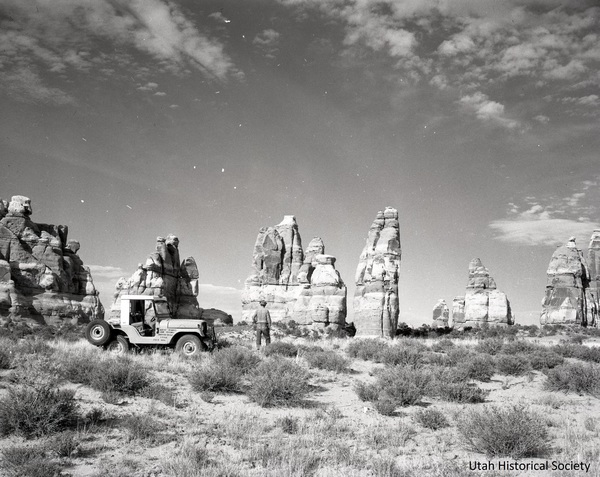Dublin Core
Title
Description
In the late 1950s, the National Park Service began assessing lands for a new national park in the area surrounding the confluence of the Green and Colorado Rivers in southeast Utah. But the desire for a new park was not without local controversy. Typically, a national park designation closed the land to any use except recreation. Some Utah leaders worried that the Park Service would impact existing grazing permits and prevent oil and gas development. But these leaders also knew that protecting such commercial uses would go against broader public opinion, even in Utah.
In 1961, at the urging of Moab locals Bates Wilson and Kent Frost, Utah’s junior senator Frank Moss introduced a bill that aimed to strike a middle ground. The proposal would preserve the area’s scenic wonders, including its Ancestral Puebloan petroglyphs, while still providing a permit system for some grazing and mining. This attempt at compromise, however, brought opposition from both sides. Neither the so-called “scenery purists” nor the “resource hogs” were happy. With little common ground between these two groups, the larger question was whether public lands would be preserved as parks or managed to support the livelihoods of those who worked on them.
Senator Moss found an ally in US Secretary of the Interior Stewart Udall, but they ran up against Utah’s senior senator, Wallace Bennett, who was uneasy with Park Service control. The two sides sparred for years, as they pushed their differing versions for the park designation.
But the public seemed to want compromise. During hearings in Monticello, Utah, and Washington, DC the majority of those who gave testimony supported commercial use, but not if it meant killing the park proposal. By then, the public had largely tired of the issue being, as one newspaper put it, on the “political see-saw.”
Ultimately, Congress passed a bill with no provisions for permanent commercial uses – meaning that mining and grazing interests were out of luck. The only concession was a ten-year extension on existing grazing rights. And so when Canyonlands became Utah’s third National Park in 1964, it marked another victory of preservation over resource development that was indicative of the era.
Creator
Source
_______________
See Thomas G. Smith, “The Canyonlands National Park Controversy, 1961-64,” Utah Historical Quarterly 59 (Summer 1991): 216-42; Gregory Smoak, Nate Housley, and Megan Weiss, Rural Utah at a Crossroads (Salt Lake City: Utah Humanities, 2023).

